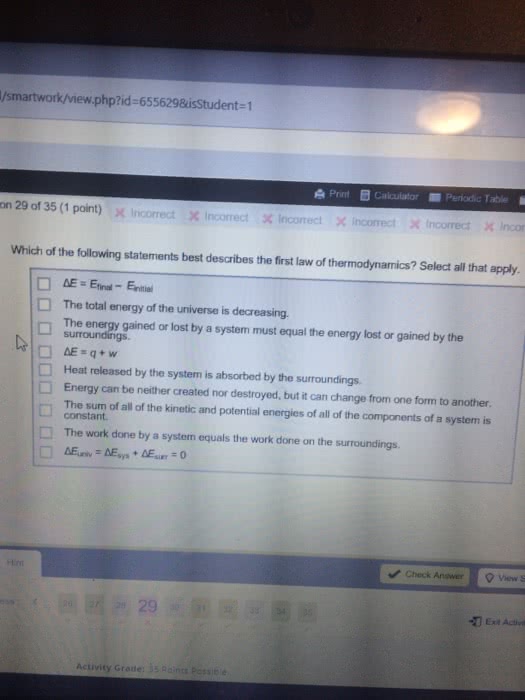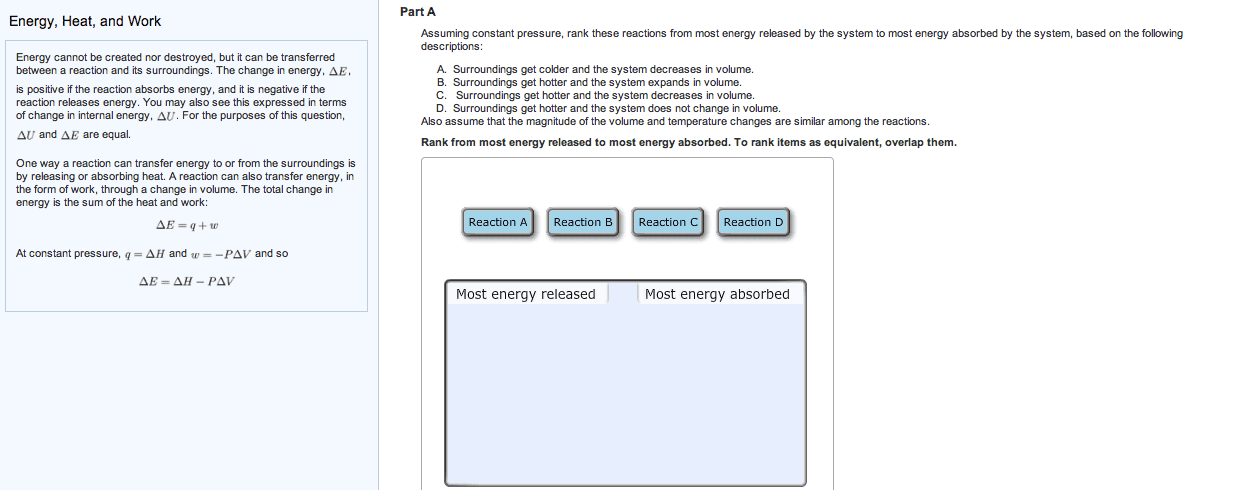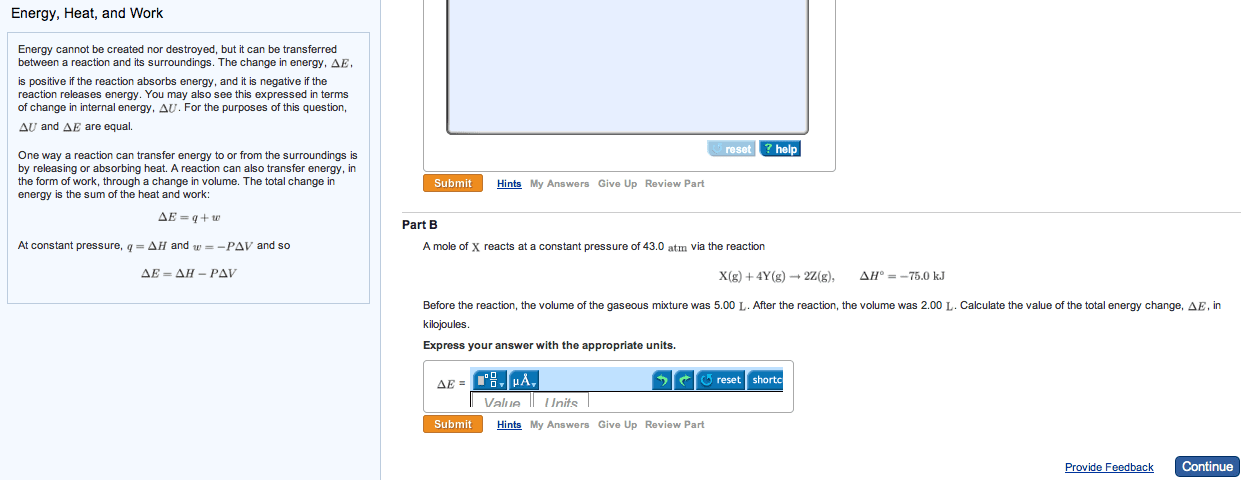CHEM 101 Lecture Notes - Lecture 5: Calorimetry, Thermodynamic System, Calorie
Document Summary
Energy-the ability to do work or transfer heat, two forms: kinetic and potential. Work-energy used to move objects, w = f x d w = -p delta v. Heat-energy used to raise temperature, flows from warmer objects to cooler objects- Kinetic energy-energy an object possess by virtue of its motion. Potential energy-energy an object possess by virtue of its position or chemical composition. System-the thing we want to study, i. e. hydrogen and oxygen molecules. First law of thermodynamics-energy is neither created nor destroyed, but it can be transferred. Internal energy-the sum of all kinetic and potential energies of all components of the system, e. Change in internal energy-delta e = e final - e initial, exchanged as either heat (q) or work (w), delta e = q + w. Endergonic-e final > e initial, the system absorbed energy from the surroundings. Exergonic-e final < e initial, the system released energy to the surroundings.




